Hiking Unit Study and Badge Resource
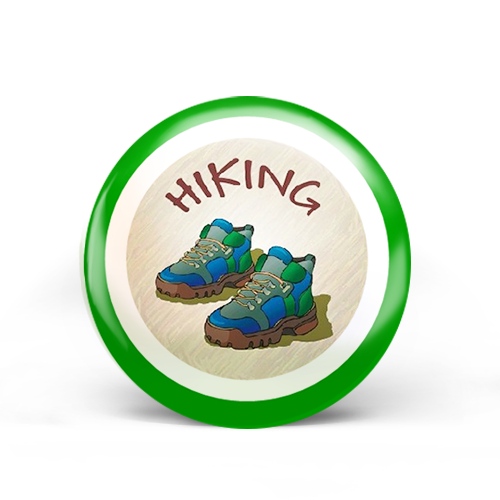
Hiking is something anyone can do for little or no cost. Whether you choose to hike a wooded trail, a country road, or even city streets, there is a hike for every interest. Exploration on foot develops powers of observation, kindles new interests, and gives a person a keener appreciation for the world around them. Use this Hiking Unit Study to help earn your Hiking badge. Other badges you may wish to earn alongside include Weather, Leave No Trace, Junior Ranger, First Aid, Outdoor Safety, Season (Specific), Camping.
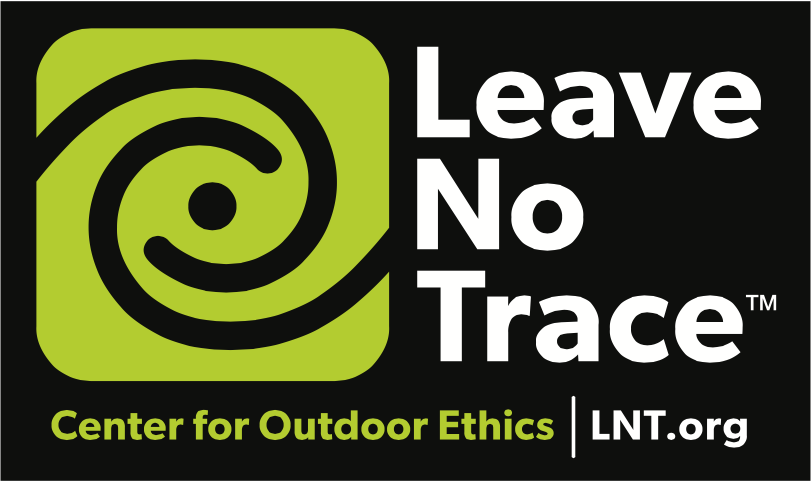
Leave No Trace
If you have ever gone hiking only to find trails filled with trash, tree branches broken, and all the flowers picked, you understand the need for Leave No Trace.
According to Jeffrey L. Marion and Scott E. Reid’s paper, Development of the U.S. Leave No Trace Program: A Historical Perspective, ” As wildland use continued to expand in the 1960’s, 70’s and 80’s, visitors to public lands began to witness the degradation of their favorite trails and campsites. The development of low impact hiking and camping practices occurred incrementally over this time period. The federal agencies, notably the U.S. Forest Service (USFS) but also the Bureau of Land Management (BLM), and the National Park Service (NPS) developed numerous brochures during these years variously called Wilderness Manners, Wilderness Ethics, Minimum Impact Camping, and No-Trace Camping. ”
In 1994, LNT, Inc. was registered as a 501©(3) non-profit educational program and is now the nationally recognized leader in low impact hiking and camping skills. The U.S. Forestry Service, Bureau of Land Management and other federal state and local agencies now partner with LNT to ensure the protection of their trails and wilderness areas.
To Do: Learn the 7 principles of Leave No Trace. Then take a hike and follow all leave no trace ideals. Take pictures or make sketches of things you see, but do not disturb anything.
Fulfills preschool requirement #1

Hiking Safety
Before setting out on a hike, it is important to learn basic safety rules. Each hiking area is different so make sure to research hazards in your area before heading out. Just a few examples of safety measures to discuss include:
- Bring plenty of water and stay hydrated. Do not drink from streams or lakes.
- Never hike alone, stay with a group and have at least 2 adults with you.
- Wear sturdy, comfortable shoes.
- Stay on the marked trail.
- Wear sunscreen
- Bring a whistle in case you get lost. Whistles are a lot louder than shouting. If you get lost. Stay put and blow your whistle.
- Let someone know where you are going
- Check the weather before you go
Each state usually has a website with safety concerns specific to their region. Click here for a sample from the state of California.
To Do: Plan a hike to a specific location. Brainstorm a list of safety concerns that may come up and how to handle them. Below are some sample questions to ask.
- Are there any poisonous or dangerous plants or animals to be concerned about? If so, what is the appropriate action to take around them?
- What should you do if you get lost?
- What is the weather supposed to be like? How can you protect yourself from natural elements such as sun, wind, rain or cold?
- How will you navigate the trail (map, trail signs, etc.) and who will know where you are?
Fulfills preschool requirement #1
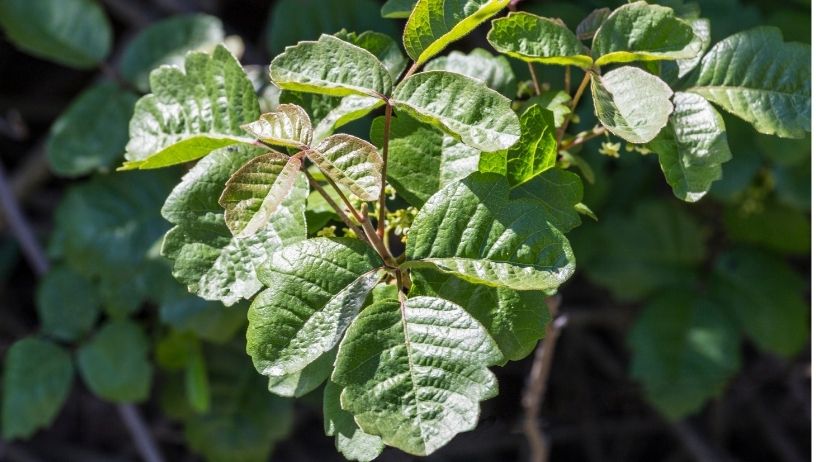
Plant and Animal Identification
Each hike you take has different flora and fauna. While well traveled trails may have limited risks, narrower trails in wildlands may have more risks. It is therefore important to be able to identify any plants or animals that may be dangerous. The more you know about the area you will be hiking, but more likely you will finish your hike without injury.
To Do: Find out which plants in your area are poisonous, or can cause rashes or injury. Examples might include poison oak, nettles, poison ivy, poison sumac, or cactus. Watch for these plants while you hike and make sure to steer clear. Everyday Health as an article on 7 common plants that will give you a rash and how to identify them.
To Do: Find out which animals and insects in your area can be dangerous and how to react if you see them. Examples might include insects such as bees, yellow jackets, hornets, mosquitoes, ticks, and stinging ants. Larger animals to be aware of may include bears, mountain lions, rattle snakes, wolves, wild pig or skunks.
Fulfills Level 1 requirement #2
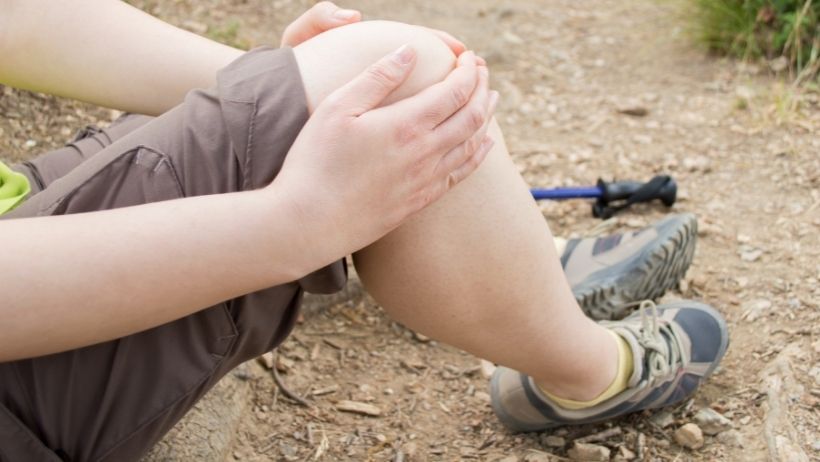
First Aid While Hiking
While it is hoped that a hike is completed without incident, it is not uncommon for injuries to happen when hiking outdoors. Learning basic first aid for common hiking injuries is a good way to be prepared in case something occurs. Hiking injuries or illnesses can include:
- Dehydration
- Sunburn
- Sprained ankle
- Insect stings
- Tick bites
- Snakebite
- Blisters
- Hyperventilation
- Altitude sickness
- Hypothermia
- Heatstroke
- Heat exhaustion
- Frostbite
To Do: Put together a small portable hiking first aid kit and make sure to bring it on all hikes. REI has an excellent check list of items to include in your first aid kit.
To Do: Role play injuries or illnesses that may occur on a hike. Have one child play the victim and the other provide the necessary medical treatment.
Fulfills Level 2 requirement 2

Importance of Trail Maps
While hiking can be a lot of fun, it is also very easy to become disoriented out on the trail and become lost. Learning how to read a trail map is essential. Not only will this keep your from getting lost, but it will also inform you of important information such as the length of the trail, hazards, steepness of inclines, etc.
While the invention of the smart phone means you now have digital maps at your fingertips, it is important to also carry a paper map. Paper maps not only offer a wider view of the area, but also act a backup in case your battery dies or you lose service. While fancy phones with digital maps and GPS service will let you know exactly where you are, if you lose service, a paper map will help you get back home if you know how to read it.
To Do: Download and print a paper trail map for a short hike at a local park or pick up a brochure with a trail map on it if the park provides them. Use your map when you get to your hike location to navigate your hike. For older kids, see if you can find a detailed trail map that includes contour lines and other topographic information as well as a map scale. REI.com has a great article that will walk you through a complex trail map for older kids and adults.
Fulfills Level 3 requirement #2
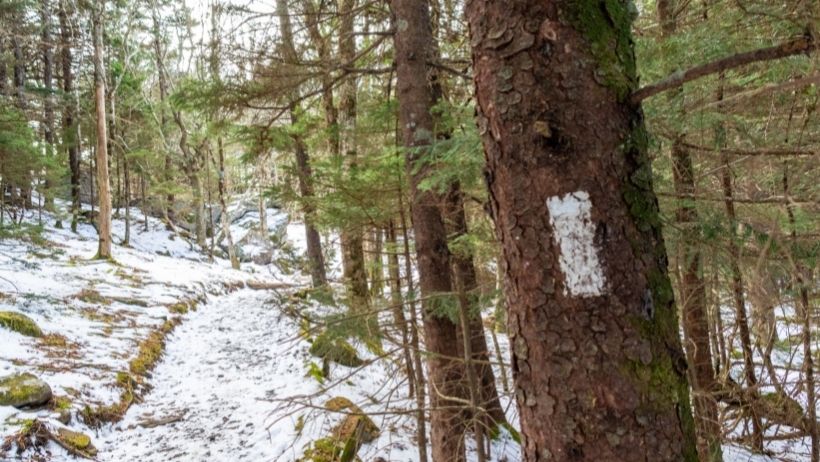
Trail Signs and Blazes
In the old days, before cell phones and printers, people who made trails had to find a way to let those who came behind them know which direction to go. Learn how to leave, and to read, basic trail signs using rocks, pebble, sticks or grass. The Canadian Girl Guides have a great resource with a printable table of various trail signs to learn. How To Wilderness also has a great article on reading blazes, cairns and ducks when hiking in the back country.
To Do: Create practice kits by placing 10 pebbles and 5 toothpicks in a small ziplock bag for each person. Shout out a command such as “Turn Right” and see how quickly everyone can create the correct sign using either pebbles or sticks.
To Do: Divide your group in two for a short hike (make sure to have an adult with each group). Have the first group leave trail signs and see if the second group can follow the instructions. Make sure to Leave No Trace and clean up all trail signs when you are done.
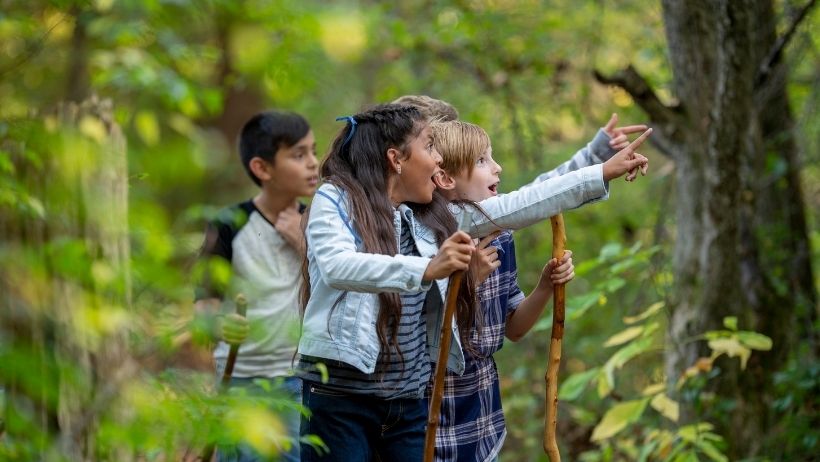
Different Types of Hikes
Whether you are hiking in the woods or through your town, you learn a lot by simply being observant of the things around you. Creating a specific type of hike where you are focusing on looking for certain things can help you see, smell and hear things you may have missed otherwise.
To Do: Choose a specialized hike from below or create one of your own. How do these hikes improve your observation skills?
- ABC Hike – Look for things that start with each letter of the alphabet
- Color Hike – Log how many different colors you see on your hike. Or choose one or two colors and see how many different things you can find in that color.
- Sound Hike – Hear and identify as many sounds as possible
- Smell Hike – Create an onion trail for others to follow. Cut an onion in half and rub it on trees to mark the trail.
- Water Hike – follow a stream, brook, or creek.
- Community Hike – map interesting things to see in your community and hike to them
- International Hike – Create a trail map of your community that includes interesting places to visit where things from other countries can be seen. For example museums, stores, libraries or homes.
Each hike type fulfills an optional requirement
Follow our Facebook page for badge of the week posts and other resources. For planning purposes you can see which badges will be featured on our badge of the week calendar. You can also sort and search articles by topic on our main blog page. If you are not already a member, check out our membership pricing page.





